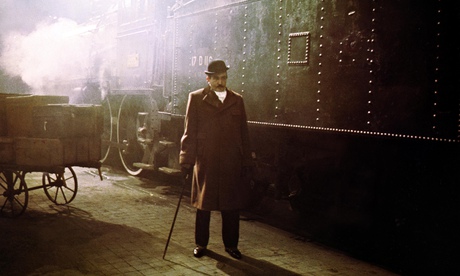
In January 1896, Parisians gathered in a basement room for the premiere of a 50-second film called The Arrival of a Train at La Ciotat Station. Legend has it that the attendees were terrified – they reportedly stampeded when the locomotive drew near. It was an inauspicious start to an enduring love affair.
In the century that followed, the combination of trains and cinema was to prove a marriage made in heaven, with the sleeper compartment the scene of its glorious consummation. Films about overnight train journeys duly set off for drama, comedy, romance and murder, but were rarely bound for sleep, because that would waste the ticket. "It's going to be a long night," Eva Marie Saint purrs to Cary Grant in North by Northwest. "And I don't particularly like the book I started."
Film-makers love the sleeper for much the same reasons that travellers do. It is more expansive than a car and more intimate than a plane. The train, moreover, appears to exist in a parallel dimension, like a moveable Chinatown where tiresome protocols can be briefly discarded. Anything might happen; the world is its oyster. The boorish members of the Ale and Quail hunting club run riot through the restaurant car of Preston Sturges's Palm Beach Story. Sweet Sue's Society Syncopators are free to stage a drunken party in Some Like it Hot (at least until Jack Lemmon pulls the panic cord). And callow American tourists can shack up with fetching Indian train staff in The Darjeeling Limited. All of these, no doubt, are also regular occurrences on the 21.16 Caledonian Sleeper service to Fort William.
In fact, when it comes to cinema, the only thing better than a boisterous journey is a nightmarish one. Who cares if a passenger goes missing (The Lady Vanishes), an all-star cast stabs a victim to death (Murder on the Orient Express) or a cackling Baron Samedi is sat at the front of the engine (Live and Let Die)? It merely adds to the fun and makes the trip more exciting.
Maybe great train movies don't even need people. The brilliant 1936 documentary Night Mail, for instance, boasted a Benjamin Britten score, a WH Auden poem and an ensemble cast of postal bags. "Dawn freshens, her climb is done," intones the narrator, as Night Mail steams out of the darkness and into Scotland.
And this is surely the point: that all journeys must end. The society syncopators have a concert to play. Cary Grant should check that he has all his belongings. But when the sleeper train closes in on its final destination, it tugs a sub-genre of cinema along with it too. Xan Brooks

